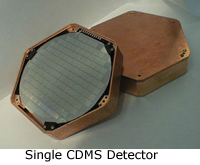6 A&S Physicists Awarded Breakthrough Prize
Our universe is dominated by matter and contains hardly any antimatter, a notion which still perplexes top scientists researching at CERN’s Large Hadron Collider. The Big Bang created equal amounts of matter and antimatter, but now nearly everything—solid, liquid, gas or plasma—is…


 Dark matter does not emit or reflect light, but scientists believe that it makes up 85 percent of the matter in the Universe. “Dark matter is the glue that holds galaxies together,” says Richard Schnee, assistant professor of physics in SU’s
Dark matter does not emit or reflect light, but scientists believe that it makes up 85 percent of the matter in the Universe. “Dark matter is the glue that holds galaxies together,” says Richard Schnee, assistant professor of physics in SU’s